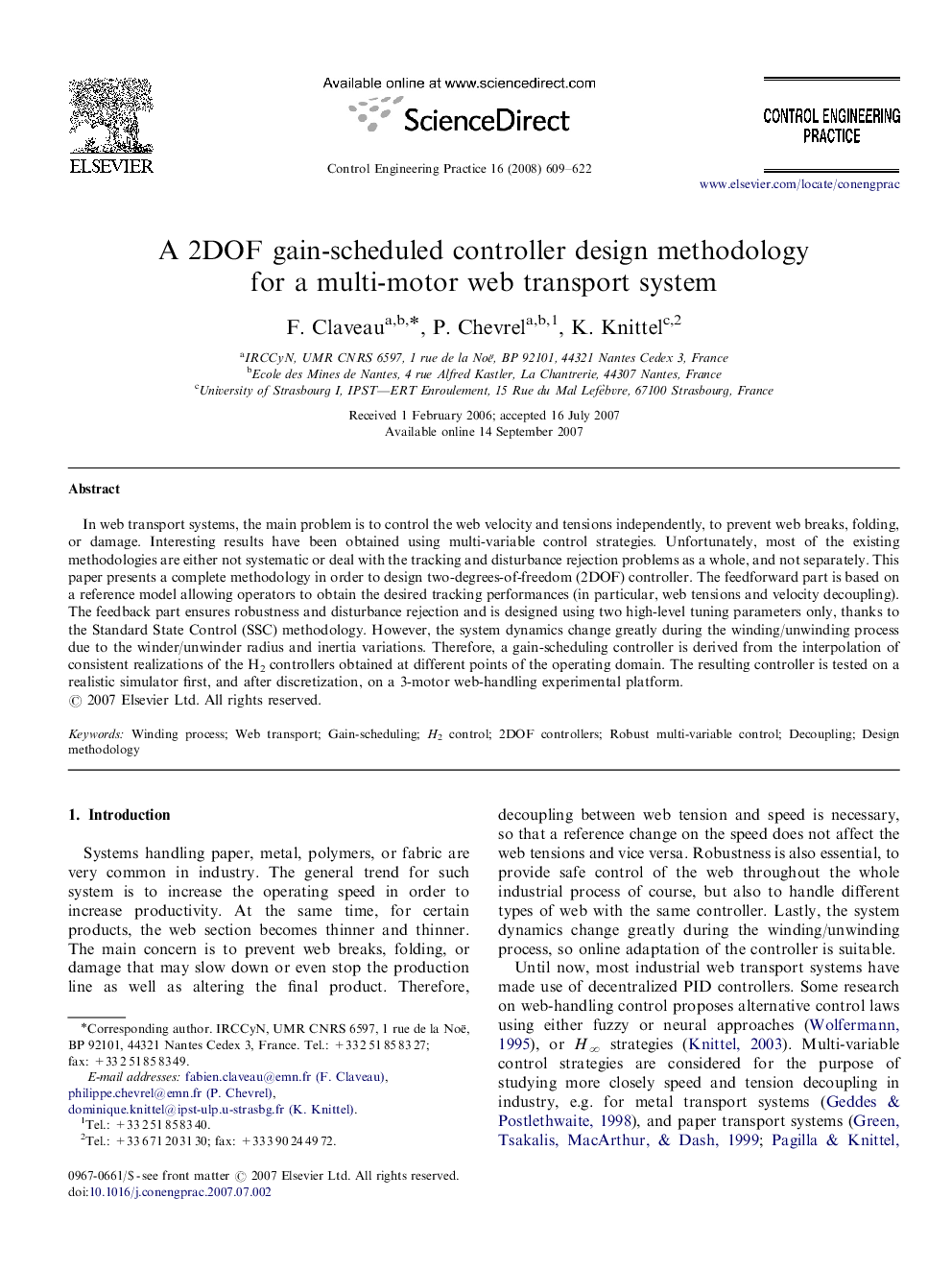| Article ID | Journal | Published Year | Pages | File Type |
|---|---|---|---|---|
| 700210 | Control Engineering Practice | 2008 | 14 Pages |
In web transport systems, the main problem is to control the web velocity and tensions independently, to prevent web breaks, folding, or damage. Interesting results have been obtained using multi-variable control strategies. Unfortunately, most of the existing methodologies are either not systematic or deal with the tracking and disturbance rejection problems as a whole, and not separately. This paper presents a complete methodology in order to design two-degrees-of-freedom (2DOF) controller. The feedforward part is based on a reference model allowing operators to obtain the desired tracking performances (in particular, web tensions and velocity decoupling). The feedback part ensures robustness and disturbance rejection and is designed using two high-level tuning parameters only, thanks to the Standard State Control (SSC) methodology. However, the system dynamics change greatly during the winding/unwinding process due to the winder/unwinder radius and inertia variations. Therefore, a gain-scheduling controller is derived from the interpolation of consistent realizations of the H2 controllers obtained at different points of the operating domain. The resulting controller is tested on a realistic simulator first, and after discretization, on a 3-motor web-handling experimental platform.
